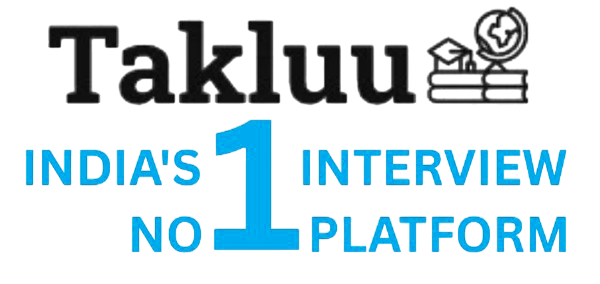Git is a distributed version control system used to track changes in source code during software development. It allows multiple developers to collaborate, manage code versions, and maintain a history of changes efficiently.

A detached HEAD in Git occurs when the HEAD pointer is not pointing to a branch, but directly to a specific commit. This means you are not on a branch, and any new commits will not be associated with any branch until you create a new branch or switch back to an existing one.
GitHub handles merge conflicts in pull requests by notifying the user that a conflict exists. The user must then resolve the conflicts locally by merging the changes in their local repository, fixing any conflicting files, and then pushing the resolved changes back to the pull request. Once resolved, the pull request can be merged.
GitHub Discussions is a feature that allows users to have conversations, ask questions, and share ideas within a repository. It provides a space for community engagement and collaboration outside of issues and pull requests.
GitHub Actions is a feature that allows you to automate workflows directly in your GitHub repository. It enables you to create custom software development lifecycle workflows, such as building, testing, and deploying code, triggered by events like pushes, pull requests, or scheduled times.
A fork in GitHub is a copy of a repository that allows you to make changes without affecting the original project. It is used to propose changes, experiment with new ideas, or contribute to the original repository by submitting pull requests.
GitHub Pages is a feature that allows you to host static websites directly from a GitHub repository. To host a project with GitHub Pages, follow these steps:
1. Create a new repository on GitHub or use an existing one.
2. Add your HTML, CSS, and JavaScript files to the repository.
3. Go to the repository settings.
4. Scroll down to the "GitHub Pages" section.
5. Select the branch you want to use (usually `main` or `gh-pages`) and click "Save."
6. Your site will be published at `https://<username>.github.io/<repository-name>/`.
You can then access your project using that URL.
To configure a simple Jenkins freestyle project, follow these steps:
1. Open Jenkins and click on "New Item."
2. Enter a name for your project and select "Freestyle project," then click "OK."
3. In the project configuration page, set up the following:
– **Description**: (optional) Add a description of the project.
– **Source Code Management**: Choose your version control system (e.g., Git) and provide the repository URL.
– **Build Triggers**: Select how you want the build to be triggered (e.g., Poll SCM, Build periodically).
– **Build Environment**: Configure any required build environment settings.
– **Build**: Add build steps (e.g., Execute shell, Invoke Ant, etc.) to define what actions to perform.
4. Click "Save" to store the configuration.
5. To run the project, click "Build Now" on the project page.
The best way to archive artifacts in Jenkins is to use the "Archive Artifacts" post-build action in your job configuration, specifying the files or patterns you want to archive.
A Jenkinsfile is a text file that contains the definition of a Jenkins pipeline. It is used to define the steps and stages of the build process in a declarative or scripted format. You use it by placing the Jenkinsfile in the root of your source code repository, and Jenkins automatically detects it when you create a new pipeline job, allowing it to execute the defined pipeline.
In Jenkins, you can handle parameters in builds by using "Parameterized Builds." You can define parameters in the job configuration under the "This project is parameterized" option. You can use different types of parameters like String, Boolean, Choice, etc. Then, you can access these parameters in your build scripts using the syntax `${PARAMETER_NAME}`.
You can trigger a Jenkins job automatically using several methods, such as:
1. **Polling SCM**: Configure the job to poll the source code repository at regular intervals.
2. **Webhooks**: Set up webhooks in your version control system (like GitHub or GitLab) to trigger the job on events like code pushes.
3. **Build Triggers**: Use the "Build Triggers" section in the job configuration to set up triggers like "Build periodically" or "Trigger builds remotely."
4. **Pipeline Triggers**: Use Jenkins Pipeline scripts to define triggers based on specific conditions or events.
Terraform is an open-source infrastructure as code (IaC) tool that allows users to define and provision data center infrastructure using a declarative configuration language. It works by allowing users to write configuration files that describe the desired state of their infrastructure. Terraform then uses these files to create, update, or delete resources across various cloud providers and services, ensuring that the actual infrastructure matches the defined configuration.
Terraform Cloud is a managed service that provides collaboration, automation, and governance features for Terraform users. It includes capabilities like remote state management, team collaboration, and a user interface for managing infrastructure. In contrast, Terraform Open Source is the free, command-line tool that allows users to define and provision infrastructure but lacks the collaborative and managed features of Terraform Cloud.
A Terraform module is a container for multiple resources that are used together. It allows you to organize and reuse your Terraform code. To create a module, you need to:
1. Create a directory for the module.
2. Inside that directory, create one or more `.tf` files defining the resources.
3. Optionally, create a `variables.tf` file to define input variables and an `outputs.tf` file for output values.
4. Use the module in your main Terraform configuration by referencing it with the `module` block and specifying the path to the module directory.
You can manage multiple environments in Terraform by using workspaces, separate state files, or directory structures. Workspaces allow you to create isolated environments within the same configuration. Alternatively, you can create separate directories for each environment, each with its own Terraform configuration and state file. Additionally, you can use variables or environment-specific files to customize settings for each environment.
Terraform workspaces are a feature that allows you to manage multiple states within a single Terraform configuration. They enable you to create separate environments (like development, staging, and production) by isolating the state files. You can switch between workspaces using the `terraform workspace` commands, allowing you to apply different configurations or manage resources independently in each workspace.
The default location of the inventory file is /etc/ansible/hosts.
A module in Ansible is a reusable, standalone script that performs a specific task, such as managing system resources, executing commands, or configuring services.
An inventory file in Ansible is a file that defines the hosts and groups of hosts on which Ansible will operate. It specifies the target machines for automation tasks and can be in INI or YAML format.
